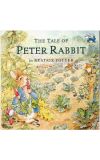
06 Sep 2013 04:31:47
The Lake District holiday home where Beatrix Potter sketched her pet rabbit Peter asleep on the hearthrug and red squirrels scampering in the surrounding woods, and a hedgehog snuffling through the undergrowth will on Thursday be given Grade II status by the government.
The listing of the property next to Derwentwater is partly to recognise the nationally important creation of the architect Alfred Waterhouse, but mainly to commemorate it as the inspiration for some of the best-loved children's books of all time.
Potter's wealthy family left London and rented Lingholm, a mansion surrounded by beautiful gardens and woods stretching down to the water's edge, for nine summer holidays between 1885 and 1907.
The house has never been open to the public, but its surroundings will be familiar to millions. Squirrel Nutkin, who "lived in a wood at the edge of a lake", sails across Derwentwater to St Herbert's Island ("Owl Island"), where he torments the deceptively sleepy owl, Old Brown, and loses his tail; the laundress hedgehog Mrs Tiggy-Winkle pegs out the robins' red waistcoats on the slope of a nearby hill; and Peter Rabbit's family lives in "the neatest sandiest hole" in the woods.
The house's walled vegetable garden with its wicket gate became the setting (with details added from other Victorian gardens that Potter knew and sketched) for the story of Peter losing his blue coat to Mr McGregor and very nearly ending up in a rabbit pie like his lamented father.
Potter was 19 and still a dutiful Victorian daughter, living at home with her protective parents, when they first stayed at Lingholm. Her love of the area inspired by the holidays helped preserve the Lake District. Wealthy from her little square books, Potter bought several Lake District farms, married a local lawyer, becoming far more famous in the region as a pedigree Herdwick sheep breeder than as an author, and left thousands of acres and many buildings to the National Trust.
The mansion itself is far too grand for Potter's little animals. It was designed for a brewing millionaire by Waterhouse, the architect of the Natural History Museum in London, in 1871, with a towering entrance hall featuring one wall covered in 17th-century gilded Spanish leather. It was later extended to incorporate a 15th century fireplace, and panelling from a hunting lodge built for James I, and stained glass from York Minster.
Culture minister Ed Vaizey described the house as remarkable. He says: "Beatrix Potter's tales are loved and cherished by people young and old around the world and Lingholm as the inspiration for so many of these classic children's stories deserves to be protected. But as well as its historical association the house itself is remarkable for the quality of its design and the fact much of the interior remains intact."
The listing was speeded up because the house and estate are currently on the market, and therefore at risk of alteration.
Potter and her brother Bertram were passionate amateur naturalists from childhood, and exchanged letters during one of their separations on how to kill, dissect and preserve some unwanted pets. Her own pets included several rabbits, including Benjamin and Peter, and a hedgehog which often travelled with her. Her sketchbooks, many now in the Victoria and Albert Museum in London, are full of detailed drawings of them, including one of Peter lying in front of the fire at Lingholm.
The stories began as illustrated letters to entertain the children of her former governess, particularly Noel, who was often ill in bed. In 1901 Potter was encouraged to publish a private edition of The Tale of Peter Rabbit. Surviving copies of the 250 originals, one once owned by Sherlock Holmes's creator, Sir Arthur Conan Doyle, are now worth a fortune.
The publisher Frederick Warne & Co turned down the unknown author and artist initially, but finally published Peter Rabbit in 1902, and sold out the first edition before the official publication date. The Tale of Squirrel Nutkin, The Tailor of Gloucester, The Tale of Mr Jeremy Fisher and The Tale of Tom Kitten quickly followed, and her 23 books have never been out of print since.
The torrent of merchandising began with Potter herself, a shrewd businesswoman who made the first Peter Rabbit soft toy and designed the first nursery wallpaper. Squirrel Nutkin, first sketched in the Lingholm woods, still dances across bedroom walls all over the world.

